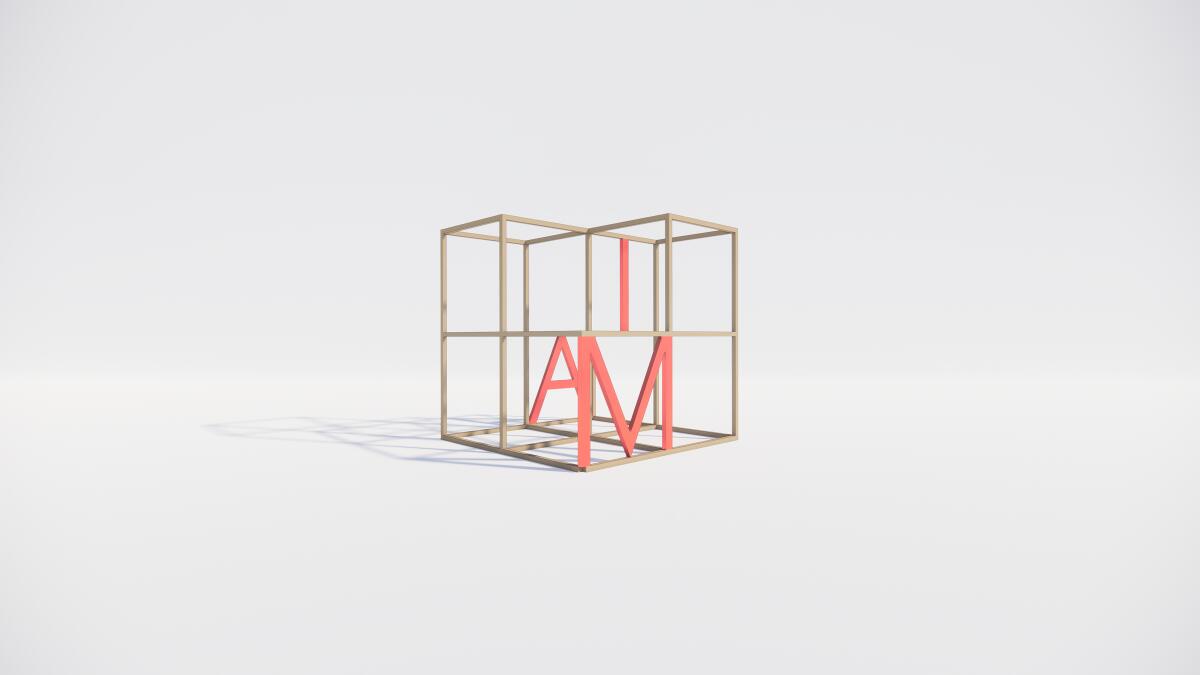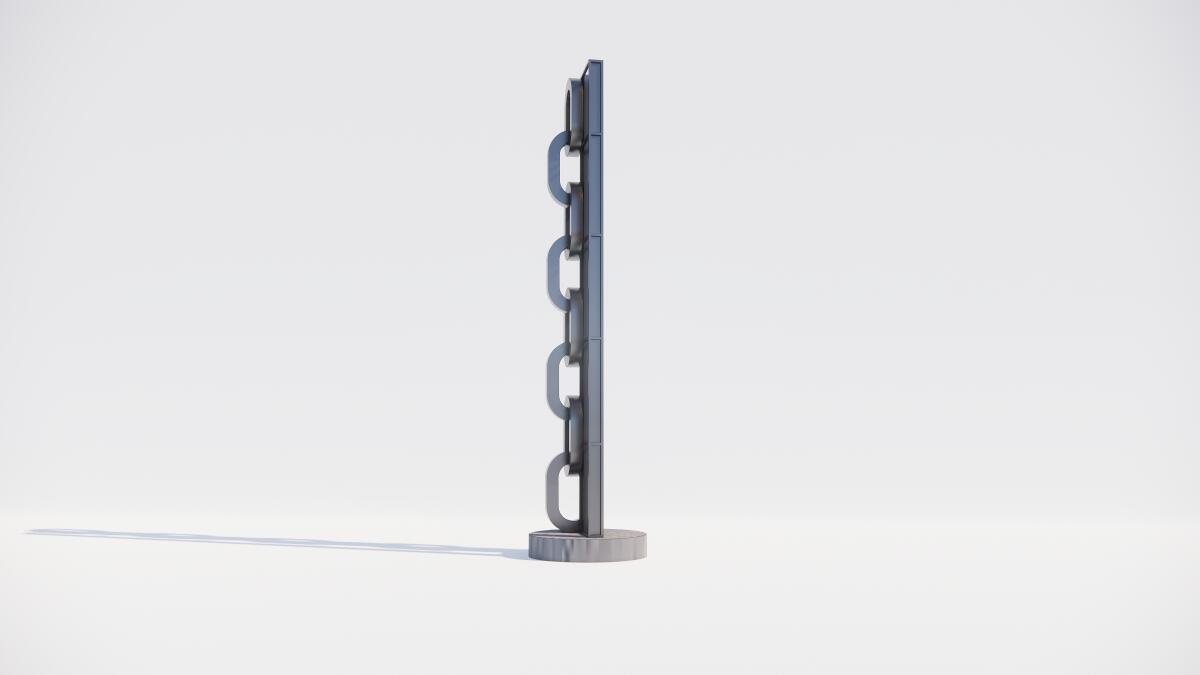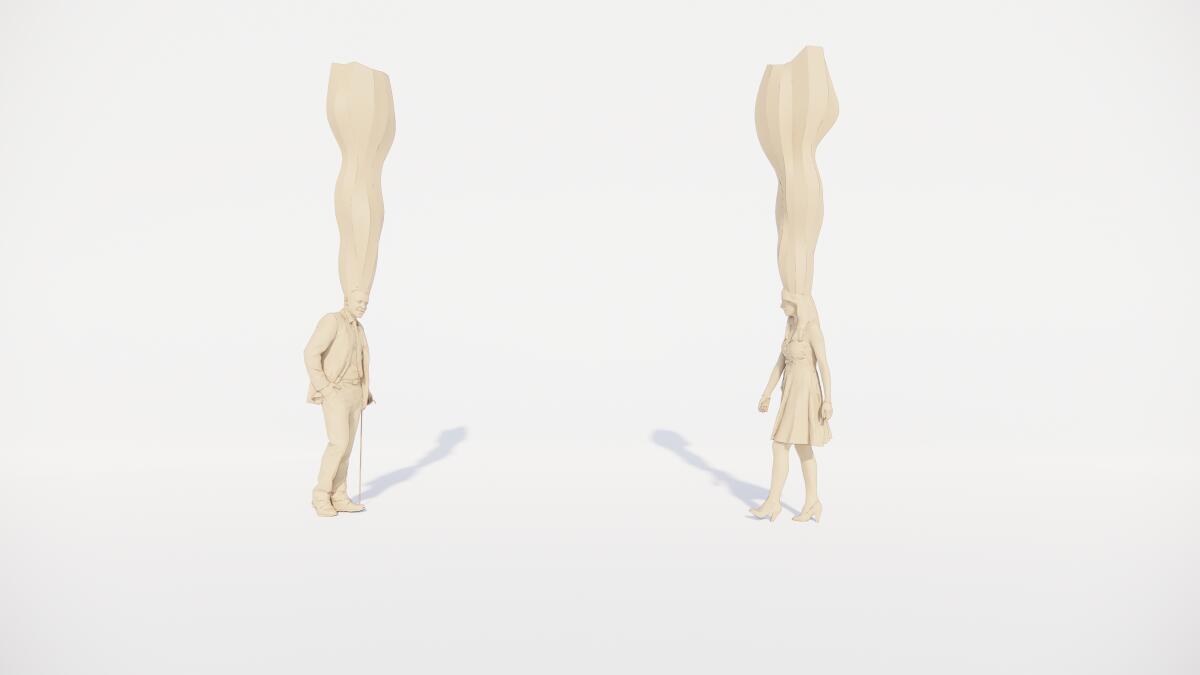Destination Crenshaw projects get city approval. What big names in Black art are making for L.A.

Destination Crenshaw, the 1.3-mile public art corridor on Crenshaw Boulevard with a lineup of top names including Kehinde Wiley and Alison Saar, had kept its works of art tightly under wraps while awaiting a Los Angeles Cultural Affairs Commission vote.
On Wednesday, the commission greenlighted plans for all seven permanent installations scheduled to debut in the first phase of the project in fall 2022.
Fundraising for the $100 million Destination Crenshaw — which now stands at $61.5 million — is getting a boost from DeMar DeRozan, a Chicago Bulls player, who will lead a new private fundraising drive, organizers said.
The Getty Foundation is providing $3 million for artist commissions, fabrication and conservation planning for the first seven sculptures.
As part of a larger partnership, the Getty Conservation Institute will consult on conservation of the works. Destination Crenshaw’s youth interns and those hired for apprenticeships will assist with conservation and maintenance.
“The Getty partnership is an incredible opportunity for Destination Crenshaw to grow as a cultural institution focused on Black artists,” Destination Crenshaw President Jason W. Foster said in an interview. “The approval from the Cultural Affairs Commission marks an important moment for the project because it allows our artists to go into fabrication of these cultural monuments. We’re excited for the opportunity to continue to move this project forward.”

So what can we expect to see lining the “Afrocentric streetscape,” as Destination Crenshaw describes it?
Four of the sculptures will stand in the new Sankofa Park at 46th Street, one of 10 parks Destination Crenshaw will create, adding 4 acres of green space to the area.
Kehinde Wiley’s work for Sankofa Park furthers his “Rumors of War” series, a response to still-standing Confederate statues. The untitled work will be a 27-foot-tall bronze sculpture of a young West African woman atop a horse and headed into battle. The series addresses issues around race, power and historical inequities in cultural monuments, but the new Destination Crenshaw work broadens the conversation, the artist has said. Wiley empowers his woman on horseback, “an indictment of the ways in which African women have traditionally been viewed,” according to the project description.
“I wanted to expand this question of a struggle for representation,” Wiley told The Times when the artist lineup was announced.
Charles Dickson plumbs the idea of mobility and creativity in his 20-foot-tall stainless steel sculpture, which celebrates the area’s car culture — lowriders that gather in Leimert Park and everyday cars that populate Crenshaw Boulevard. Three West African Senufo figures anchor “Car Culture.” But instead of being sculpted from wood, they’re made of stainless steel, and the work incorporates fiber optic cables and automotive paint. The figures wear crowns made from what look like the front and back ends of cars, and their headlights and taillights will light up at night. A car engine sits at the top, symbolizing our capacity to engineer our futures by connecting with the past.
“Part of the purpose is to empower community with some understanding of their cultural reference, of our African beginnings, and how that creativity expands into where we are today,” Dickson said in an interview. “The Senufo figures are at a very prominent scale, which is very unique, and they’re highly polished like the bumpers of a car.”
Dickson said he’s always seen cars as art, “as a rolling piece of sculpture.”
“Car culture is a healthy way of connecting with one’s creative self, it’s a unique expression,” he said. “There’s an opportunity here to talk about the lowriders and the various colors and patterns, the wheels; they’re very creative. I was never a cruiser, but I had friends who were. It was a way of being creative, a way of being proud of being in the neighborhood.”

Artis Lane’s “Emerging First Man” is a 12-foot-tall bronze figure looking up into the sky, a symbol of hope and leadership. The figure, a Black man, represents all of humanity and its shared struggles and achievements. Lane sees the Crenshaw neighborhood as a place of discovery, opportunity, growth and communion, a place where personal transformation can occur. As a physical manifestation of this idea, the the ceramic mold from which the sculpture was made will be visible on the exterior of the work. It symbolizes “a physical and spiritual birth into an understanding of purpose and possibility,” according to the project description.

Maren Hassinger’s 6-foot-diameter, hot pink fiberglass orb will likely stir curiosity and spark smiles. “An Object of Curiosity, Radiating Love” will sit on grass in a central area of Sankofa Park and appear to glow from within. It will have motion sensors and LED lighting around its perimeter, so as people approach it, it will light up, as if in dialogue with passersby. Love, the work posits, is central to community members working together and “resisting gentrification and erasure,” as the project description says.

Melvin Edwards’ sculpture “Column,” a continuation of his “Columns of Memory” series, will sit roughly midway along the corridor, at 54th Street. The work, more than 25 feet tall, is a stainless steel chain-link column that twists into the sky, symbolizing the struggle upward and toward a brighter future. Edwards has long used chain link in his work to represent connection and community as well as resistance and fortitude. This is his tallest chain-link sculpture to date, and the work speaks to the entwined histories of communities throughout L.A. as well as Edwards’ experiences living and working in L.A. from 1955 to 1967.
“It’s a column of memory — and memory being plural,” Edwards said in an interview. “I became an artist about 15 or 20 blocks from the site; my first sculpture ever exhibited, in 1963, was in a building on Vernon and Van Ness. So there are connections to my development as a person and an artist, to the many artists who were inspirational to me, like Francis de Erdely, who taught at USC, Daniel LaRue Johnson and Ronald Miyashiro.”
Edwards said he also sees the work as metaphorical: “It hopefully speaks to the human experience in the region,” he said. “There are a lot of connections — between communities of people who lived in that area and developed that area. Crenshaw is a connection between the airport and rail line at Jefferson Boulevard — the column of memories are many and complex.”

A sculpture by Alison Saar will stand in 50th Street Park on Crenshaw. Saar has fond memories of the Crenshaw area, a place where her mother, the artist Betye Saar, went shopping and felt comfortable as a woman of color in the early 1950s. Fittingly, Alison Saar’s “Bearing Witness” speaks to the past, present and future of the area. Two 13-foot-tall bronze figures, a man and a woman, will be dressed in 1950s and early 1960s clothing. Their prominent hairdos will be filled with everyday objects, cast in bronze, that Saar sourced from local thrift stores— books, musical instruments and other objects representing the art, music and literature that define the area.

Brenna Youngblood’s work will stand in I AM Park on Slauson Avenue at Crenshaw. Youngblood visited the Crenshaw area when she was a child growing up in Riverside. She now lives and works in the neighborhood. Her 8-foot-tall bronze text sculpture speaks to the “creativity, vitality and innovation that grow out of a strong Black community where children have the opportunity to grow into the fullness of themselves,” according to the project description.
The piece is in direct dialogue with one of her previous sculptures, Youngblood’s “M.I.A.” (2011), which is part of the permanent collection at the Los Angeles County Museum of Art. She rearranged the letters, and the new work, which looks like stacked children’s toy blocks, is titled “I AM.” The language play — the renaming — speaks to identity, agency and self empowerment. The work also nods to the civil rights movement, particularly the 1968 sanitation workers strike in Memphis, Tenn., where protestors’ signs read “I AM A MAN.”
“These are important artists,” Destination Crenshaw senior art and exhibition advisor Joy Simmons said in an interview. “It’s a level of excellence we want to have in our community and have our children and adults live with and appreciate.”
Destination Crenshaw will continue to commission new works for the corridor — 100 artists in all, through 2027.
The Getty’s funding is critical, Foster said.
“This is a new nonprofit, so we’re looking for these foundational relationships that sustain the organization and grow the programming. Being connected to the Getty is exactly where we want to be — we are only as strong as our partnerships.”
Getty Foundation Director Joan Weinstein issued a statement that called Destination Crenshaw “a fitting and joyful tribute to Black creativity and history, combining a high level of artwork, urban design and landscape design with targeted economic investment and community engagement every step of the way.”
More to Read
The biggest entertainment stories
Get our big stories about Hollywood, film, television, music, arts, culture and more right in your inbox as soon as they publish.
You may occasionally receive promotional content from the Los Angeles Times.







